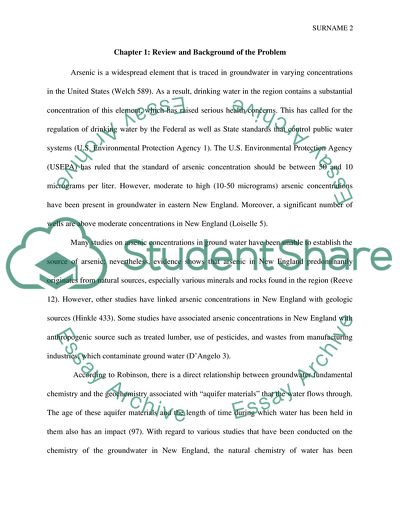Cite this document
(Arsenic in Groundwater in Eastern New England Essay Example | Topics and Well Written Essays - 1250 words, n.d.)
Arsenic in Groundwater in Eastern New England Essay Example | Topics and Well Written Essays - 1250 words. https://studentshare.org/environmental-studies/1773600-arsenic-in-groundwater-in-eastern-new-england
Arsenic in Groundwater in Eastern New England Essay Example | Topics and Well Written Essays - 1250 words. https://studentshare.org/environmental-studies/1773600-arsenic-in-groundwater-in-eastern-new-england
(Arsenic in Groundwater in Eastern New England Essay Example | Topics and Well Written Essays - 1250 Words)
Arsenic in Groundwater in Eastern New England Essay Example | Topics and Well Written Essays - 1250 Words. https://studentshare.org/environmental-studies/1773600-arsenic-in-groundwater-in-eastern-new-england.
Arsenic in Groundwater in Eastern New England Essay Example | Topics and Well Written Essays - 1250 Words. https://studentshare.org/environmental-studies/1773600-arsenic-in-groundwater-in-eastern-new-england.
“Arsenic in Groundwater in Eastern New England Essay Example | Topics and Well Written Essays - 1250 Words”. https://studentshare.org/environmental-studies/1773600-arsenic-in-groundwater-in-eastern-new-england.


